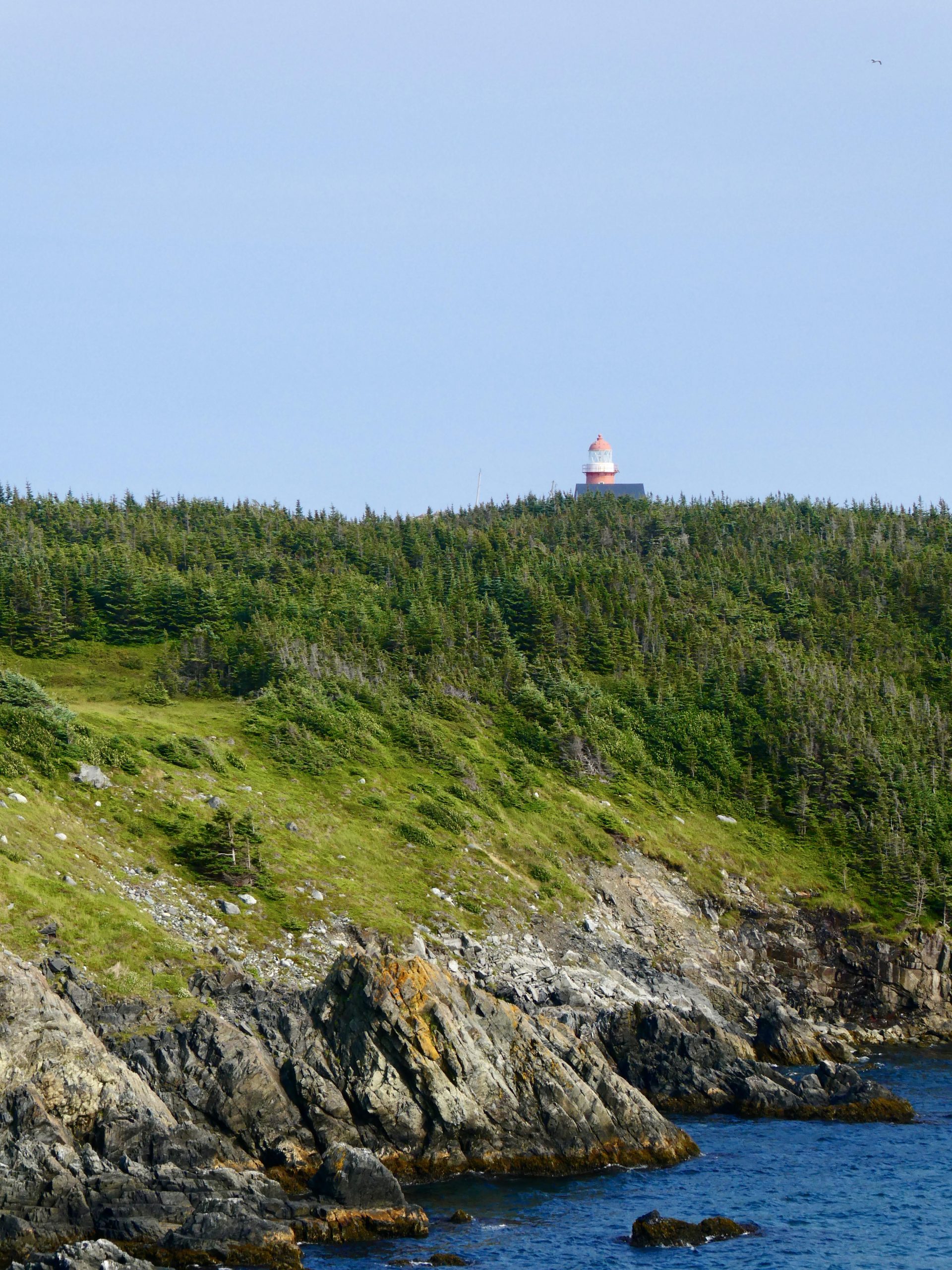What effects does clear-cutting have on the human and the natural environment? What are the consequences for the northern American Caribou? Empirical studies. Participation and fieldwork in a FANE (For a New Earth) School of Practical Ecology, Newfoundland

Paper written by
Marlene Vielhaber
August 2023
Abstract
How can we convince people dealing with resources and ongoing technical developments that a conscious relationship with the environment and nature is of personal advantage? How do we create individual motivation to protect the earth in the long term if it means forgoing short-term advantages and possessions? Does a strong human-environment relationship enable the individual to focus on long-term benefits? Is this re-anchoring of our way of life in simplicity, which can be traced far back to the origins of human history, scalable in today’s world? Or is it another version of escaping from the narrow social environment, a form of romanticized self-discovery?
Keywords: The boreal zone, the impact of the boreal zone on the global environment (including the atmosphere), the definition of clear-cutting, economic-ecological situation of the Canadian forests, impact of clear-cutting on environment, ecology and humans, FANE and FFS 2023 (FANE Field School 2023)
Regarding current debates about forests and forest destruction, the tropical rainforest is the ultimate focus of interest. However, in addition to saving tropical forest areas, the importance of the (remaining) intact boreal forest is often overlooked. Canada’s boreal forests, which cover over 1 billion hectares, stretch from the Yukon Territory in the west to Newfoundland in the east. This vast area makes up 28% of the green crown of the boreal forest that encircles the globe south of the Arctic Circle (URL: WWW.NRDC.ORG, 2017).
This paper deals with the ecosystem services of forests and the impacts of intensive forestry using the example of Canada’s boreal forests. The environmental impact of forestry encompasses various developments throughout the life cycle of forest products (POHJANMIES ET AL., 2017). However, the focus is on changes in the structure and functioning of the forest ecosystem, which can affect the supply of ecosystem services provided by the forest (POHJANMIES ET AL., 2017). In general, the provision of ecosystem services can be described as a process that looks at the interactions between living organisms and their environment and leads to a better understanding of relevant ecosystem structures and functions. These interactions end with benefits and value for humans (POHJANMIES ET AL., 2017). Because forestry is a major economic sector for Canada and the ecological impacts of industrial forestry are significant, constructive collaboration between economics and ecology is
fundamental to stabilizing, if not saving, boreal forests.
The boreal zone with its ecosystems provides numerous provisioning, regulating and culturally supporting services. These forest services include climate regulation, water purification, flood regulation, as well as cultural and recreational uses (BRANDT ET AL., 2013). Forests also support the primary production of soil and nutrient cycles on their land (BRANDT ET AL., 2013 AFTER HASSAN ET AL., 2005). Boreal forests can achieve old-growth forest status in their natural state and then remain so forever. Forests in parts of Labrador are an example of this statement. There, nature maintains 85% mature forests in the long term despite external influences such as windthrows and insects or in dry and drought periods, including fires (URL: FORANEWEARTH.ORG, 2018).
Canada has a duty to protect these important regions in their original forms and must ensure that this boreal forest remains a robust and vital resource. Also to prevent the extreme effects of climate change (URL: WWW.NRDC.ORG, 2017). By locating the problem in Canada’s boreal forests, the need for cooperation with the local population and political interest groups also comes into focus.
Indigenous peoples must be better protected from industrial interventions and allowed to participate even more in their approaches to ecological management. The fact that this leads to success in an ecological sense has already been recognized (URL: WWW.BOREALBIRDS.ORG, 2015), but there is still a need for further socio-political action.
In some situations, boreal production forests are often associated with strong cultural values and identities by the local population and thus play a crucial role in global biophysical processes. Therefore, an assessment of the impacts of forest management on forest communities and ecosystem functions from the perspective of human benefits and values is considered relevant in this context (POHJANMIES ET AL., 2017).
The effects of clear-cutting on the situation of the Innu Nation in Canada are particularly significant in this regard. The traditional territories of the indigenous peoples are under threat. Due to the advancing industrial activities towards the north, their areas are being degraded beyond recognition. (URL: WWW.NRDC.ORG, 2017).
First Nations are now at the forefront of comprehensive forest land use planning in many areas. Indigenous peoples have already recognized the need for a healthy future for their own lands, while also wanting to preserve economic opportunities for the future. Various projects have shown that it is worthwhile to leave or allow Indigenous peoples to take the lead in decision-making when it comes to the future of their land (URL: WWW.BOREALBIRDS.ORG, 2015). By working with indigenous ecological
approaches, for example, areas of primary forest can be preserved. Stakeholder engagement and participation lead to closing large information gaps regarding forest regeneration outcomes, greenhouse gas emissions associated with timber harvesting and the important ecosystem changes in Canada (URL: WWW.NRDC.ORG, 2017)
The focus of science is also on the shift in the distribution areas of wild animals and plants and on the growth and death of populations. Understanding the factors that contribute to the shifting or reduction of species’ ranges – exemplified by the North American caribou – is not only relevant for future predictions of such developments (D’ORANGEVILLE ET AL., 2023).
When threats and extinctions of wild species occur, habitat loss is the most important factor (SCHAEFER AND MAHONEY, 2007 AFTER WILCOVE ET AL., 1998). Deciphering the respective roles of past climate change and anthropogenic habitat loss as drivers of boreal caribou range contraction is not an easy task. Both factors have simultaneously increased their influence in recent decades. Influences due to land use have been responsible for most research efforts due to their importance within the caribou range (D’ORANGEVILLE ET AL., 2023). Thus, anthropogenic impacts on wildlife today are often measurable through the prism of habitat selection of different species (SCHAEFER AND MAHONEY, 2007).
According to the findings of Schäfer and Mahoney, the negative effects on forestdwelling and migratory caribou could be reduced by concentrating disturbances in ecosystems rather than scattering them across the landscape. In Newfoundland, however, this would be an extreme challenge, as the marketable timber stands are often scattered across the island (SCHAEFER AND MAHONEY, 2007).
A clear understanding of these shifts in biodiversity also helps to develop conservation and management strategies that slow down these changes or at least mitigate the additional impact of humans on flora and fauna (D’ORANGEVILLE ET AL., 2023). The scientific findings on the global challenges are available: In this regard, collaborations such as the CBFA refer to a statement in the IPCC (Intergovernmental Panel on Climate Change) report of 2007, according to which a sustainable forest management strategy that focuses on maintaining or increasing the carbon stocks of a forest while equally producing a sustainable annual yield of wood and energy from the forest will provide the predominant sustainable use factor for mitigating climate change (URL: WWW.CANFOR.COM, 2016).
Nevertheless, this increasingly well-founded scientific basis of the current problematic situation does not seem to motivate people to change their behavior individually or collectively. This raises the question of whether a scientific-cognitive approach can be the right, i.e. sufficient extrinsic motivation for people today. A lack of humanenvironmental awareness is a major indicator when it comes to ecological consequences based on economic measures. The scientific approach is too distanced to support this re-connection to nature. In order to convince people to treat their natural environment sustainably, the emotional connection to nature must be as firmly anchored as scientific recognition is today.
In addition to this illustration of the need for action at the political-economic levels, the solution approach from main part B of this paper can be used. The empirical observations of the FANE Field School for Practical Ecology made it possible to evaluate the results and prove our thesis that an emotional approach can usefully complement cognitive-scientific findings. The inaugural FANE Field School was successful in fostering an emotional connection to a natural environment, in this
instance, a square kilometre of uninhabited coastline in Conception Bay North, Newfoundland. In addition to the level of political need for action in forestry, the level of individual need for action still remains. This requires further FANE Field Schools, scientific work and in-depth debates on human-environment relationships and their associated impacts as well as political agreement, public participation and the restoration of humanity’s traditional knowledge of local environments. An emotional approach that relies heavily on the human-environment bond can, in addition to the
current scientific findings on global warming, deforestation and the loss of large parts of nature, have an effect at an individual level that can be elevated to a meta-level and thus mitigate the environmental challenges facing humanity.

